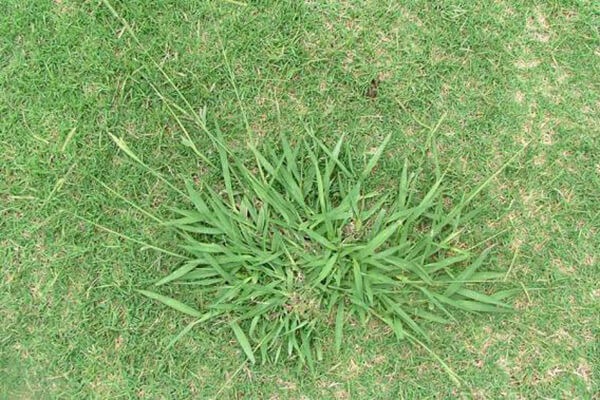
Paspalum Grass
Botanical name: Paspalum dilatatum
Common Names
Also known as: paspalum, caterpillar grass, millet grass, common paspalum, Dallis grass, hairy flowered paspalum, large watergrass, Leichhardt grass,
Paspalum Grass Description
A long-lived tufted grass growing up to 1.5 m tall. Its leaf blades are slightly folded at the base and are usually hairless. Its seed-heads are borne at the tips of the upright flowering stems these seed-heads have 2-11 branches (2.5-11 cm long) that are alternatively arranged along a main stalk each seed-head branch bears numerous small flower spikelets that are covered with hairs.
STEM AND LEAVES
The flowering stems (i.e. culms) are sometimes branched near the base and their joints (i.e. nodes) are usually hairless (i.e. glabrous). The leaves consist of a leaf sheath, which partially encloses the stem, and a spreading leaf blade. The leaf sheaths are hairless (i.e. glabrous), although sometimes the sheaths of lower leaves have a few long hairs (i.e. they are sparsely pilose). The leaf blades (6-45 cm long and 3-12 mm wide) are slightly folded at the base and are usually hairless (i.e. glabrous) with rough (i.e. scabrous) margins.
FLOWERS AND FRUITS
The flowering stems (i.e. culms) are sometimes branched near the base and their joints (i.e. nodes) are usually hairless (i.e. glabrous). The leaves consist of a leaf sheath, which partially encloses the stem, and a spreading leaf blade. The leaf sheaths are hairless (i.e. glabrous), although sometimes the sheaths of lower leaves have a few long hairs (i.e. they are sparsely pilose). The leaf blades (6-45 cm long and 3-12 mm wide) are slightly folded at the base and are usually hairless (i.e. glabrous) with rough (i.e. scabrous) margins.
REPRODUCTION AND DISPERSAL
This species reproduces mainly by seed, which are dispersed by wind, water, animals, vehicles, machinery, and in contaminated soil and agricultural produce.
SIMILAR SPECIES
Paspalum (Paspalum dilatatum) is similar to other closely-related grasses, including broad-leaved paspalum (Paspalum mandiocanum), Bahia grass (Paspalum notatum), Vasey grass (Paspalum urvillei), scrobic (Paspalum scrobiculatum) and tussock paspalum (Paspalum quadrifarium). These species can be distinguished by the following differences: paspalum (Paspalum dilatatum) is a moderately-sized grass (usually about 1 m tall) with relatively narrow leaves (up to 12 mm across). It has relatively large flower spikelets (3-4 mm long) with long silky hairs on their margins and its seed-heads usually only have 3-7 branches (i.e. racemes).broad-leaved paspalum (Paspalum mandiocanum) is a low-growing grass (less than 1 m tall) with relatively broad leaves (up to 20 mm across). Its relatively small flower spikelets (2-2.5 mm long) do not have long silky hairs on their margins and its seed-heads usually have only 3-10 branches (i.e. racemes).Bahia grass (Paspalum notatum) is a low-growing grass (usually less than 60 cm tall) with relatively narrow leaves (up to 10 mm across). Its relatively large flower spikelets (2.75-4 mm long) do not have long silky hairs on their margins and its seed-heads usually have only two branches (i.e. racemes).Vasey grass (Paspalum urvillei) is a tall grass (1-2.5 m tall) with relatively narrow leaves (4-9 mm across). It has relatively small flower spikelets (2-3 mm long) with long silky hairs on their margins and its seed-heads usually have 10-20 branches (i.e. racemes).scrobic (Paspalum scrobiculatum) is a moderate-sized grass (usually 0.5-1.5 m tall) with relatively narrow leaves (3-12 mm across). Its relatively small flower spikelets (2-2.5 mm long) do not have long silky hairs on their margins and its seed-heads usually have only 2-7 branches (i.e. racemes).tussock paspalum (Paspalum quadrifarium) is a tall grass (1-2 m tall) with relatively narrow leaves (4-9 mm across). Its relatively small flower spikelets (2-3 mm long) do not have long silky hairs on their margins and its seed-heads usually have 15-25 branches (i.e. racemes).
Reference: https://weeds.brisbane.qld.gov.au/
